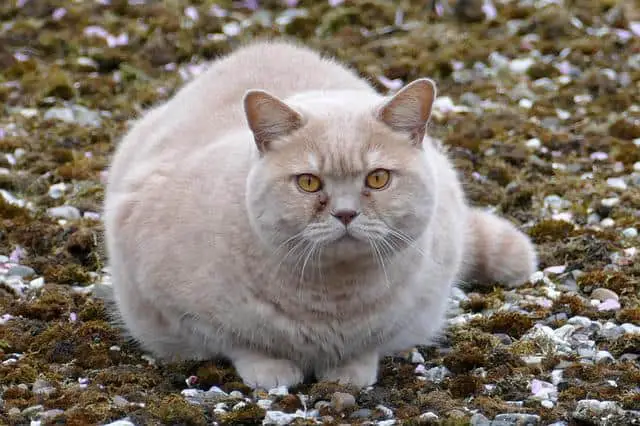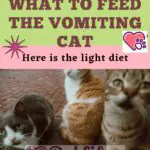
Domestic cats have “only one” defect, at least one of those for which they tend to gain weight exponentially: that is, they are greedy and ask for good food at will. It is no coincidence that 40% of cats at home are obese. This is a problem related in most cases to an overeating: croquettes always available and cans of wet at mealtimes, all seasoned with whole days spent lounging on the sofa at home, at most, above the wardrobe… A mix that at 99% will lead the cat to exceed the limit of the hands on the scale.
Health problems in the obese cat

In other cases, feline obesity is linked to diabetes so it is important to keep the animal’s weight under control in order not to run into more serious diseases.
A normal cat should be defined in the flank region and should not have too much fat on the rib cage. In order to keep a domestic feline in perfect physical shape it is good to opt for a balanced and varied diet in which some essential principles are never lacking such as taurine and arginine (amino acids contained in animal proteins), arachidonic acid (fatty acid), vitamin B6 and niacin.
Weight problems can lead to serious health problems over the years such as arthritis, heart problems, hormonal abnormalities, bone and joint disorders, as well as help in the onset of diabetes.
Feeding the cat
Not only is it important to make the cat do physical activity, providing the cat with toys with which he can have fun or if he does not have the opportunity to go outside freely, he may be used to a walk on a leash. The diet varies according to both physical activity and the age of the cat and it is always advisable to alternate wet and dry in quantities of 60% and 40%.
The diet of a growing kitten will be that of 70 grams of wet and 35 grams of kibble. The calculation for an adult cat is that of 40 grams of wet for each kilo of weight while for the dry the amount of wet will be divided by 3. As the cat gets older, the quantity does not vary, but also based on the veterinarian’s suggestions, specific products can be integrated.
Make the cat lose weight
To make your cat lose weight, it is important to reduce the diet progressively, in case at the beginning of a quarter of the daily amount. The overweight cat should not always have food available and it is preferable to feed him 2 or 3 times throughout the day. A diet aimed at weight loss must be high in protein and low in carbohydrates. The pace at which he must lose is the 1% reduction in body weight per week.
Unfortunately, good practices sometimes have to clash with the harsh reality: that of the “picky” cat. This is why it is never easy to change the diet of our domestic feline. The introduction of the new type of food can be done gradually, for example by mixing low carbohydrate kibble with kibble that the cat loves to eat.
To entice the meal it is also possible to introduce ingredients that he loves, in small quantities and that stimulate the appetite, giving the cat a sense of satiety such as water flavored with chicken broth, small quantities of cooked fish or meat, cooked vegetables, fresh soft cheese or some yogurt.






